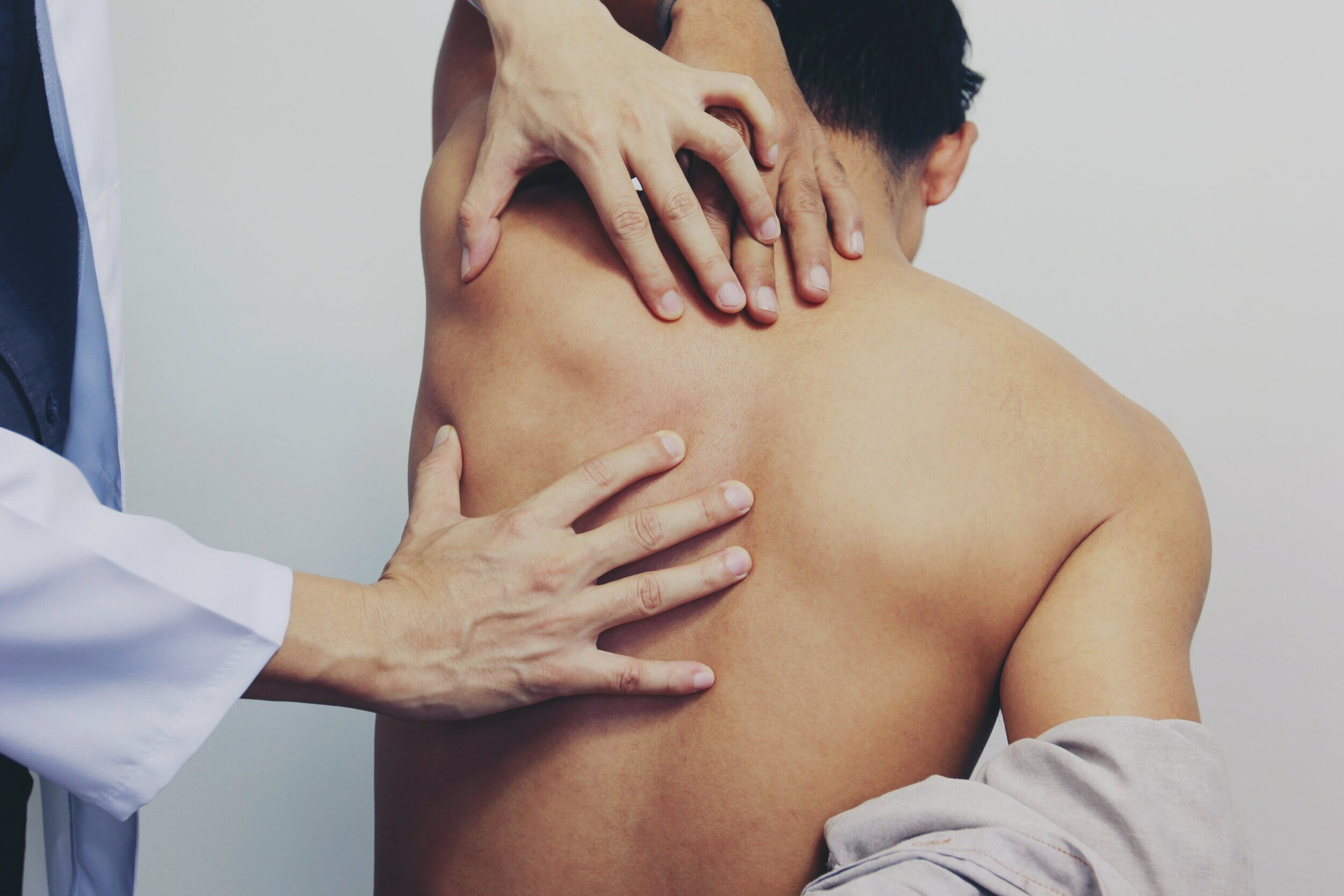Degenerative Disc Disease
Degenerative disc disease is a weakening of one or more vertebral discs, which normally act as a cushion between the vertebrae. This condition can develop as a natural part of the aging process, but it may also result from injury to the back.
Disc Wall Tears: Degenerative disc disease generally begins when small tears appear in the disc wall, called the annulus. These tears can cause pain.
Disc Wall Heals: The tears heal, creating scar tissue that is not as strong as the original disc wall. If the back is repeatedly injured, the process of tearing and scarring may continue, weakening the disc wall.
Disc Center Weakens: Over time, the nucleus or center of the disc becomes damaged and loses some of its water content. This center is called the pulposus, and its water content is needed to keep the disc functioning as a shock absorber for the spine.
Nucleus Collapses: Unable to act as a cushion, the nucleus collapses. The vertebrae above and below this damaged disc slide closer together. This improper alignment causes the facet joints — the areas where the vertebral bones touch — to twist into an unnatural position.
Bone Spurs Form: In time, this awkward positioning of the vertebrae may create bone spurs. If these spurs grow into the spinal canal, they may pinch the spinal cord and nerves, resulting in a condition called spinal stenosis.
Degenerative Disc Disease Symptoms
The site of the injury may be painful. Some people experience pain, numbness, or tingling in the legs. Strong pain tends to come and go. Bending, twisting, and sitting may make the pain worse. Lying down relieves pressure on the spine.
Degenerative disc disease affects thousands of people every year in the U.S. alone, reducing their quality of life and causing them to pursue medical help for the relief of pain. Disc degeneration is actually quite natural as we age, but in some cases, it can become a source of chronic pain.
One of the first degenerative disc disease symptoms is a tingling or numbness in the extremities. This leads many people to think the problem is originating elsewhere in the limb, since the pain or discomfort is not in the spine. However, this tingling is a sign of things to come, because the nerves in the spine are being pinched or crowded, causing them to malfunction. Inflammation of the nerves takes place, and the symptoms get worse.
Sometimes, the pain and discomfort begins in the lower back. You may feel like your knees are weak, or your hip, buttock, or thigh may tingle or “go out” on you when you bend over or try to sit. Sometimes, the degenerative disc disease makes itself apparent when you are twisting your torso, or when you bend over to lift something.
Upper back pain is a condition that often starts in the neck. You may feel pain that radiates outward to your shoulders, even to your hands. Some people even think they are having a heart attack because of the pain in their shoulders and arm. This type of degenerative disc disease will interfere with the blood flow to your brain, causing headaches. Advanced cases can cause vertigo, and even affect your memory and your ability to think clearly.
The causes and course of injury that contribute to degenerative disc disease are generally textbook. You injure your back, and inflammation sets in around the affected disc in the body’s attempt to relieve the injury. This inflammation, however, can cause the problem to become worse by irritating the nerves. White blood cells that rush to the area also die, leaving debris behind that doesn’t always get carried away by the inflamed capillaries. The nerve endings that run up and down the spine are affected by this inflammation. In some people, this is worse because their nerve endings actually extend into the disc itself. This isn’t usually a problem – until there is inflammation, and then, pain sets in. This can lead to chronic pain and poor quality of life.
Degenerative Disc Disease Treatment
Most degenerative disc disease treatments include therapy and non-invasive medical treatments. At Innovative Pain & Spine Specialists in Lincoln and Omaha, Nebraska, our pain medicine providers use a multi-disciplinary approach to treatment, including physical rehabilitation and chiropractic services. Chiropractic care has a great track record in treating this type of injury, as does osteopathic manipulation. A course of anti-inflammatory drugs will help reduce the inflammation around the nerves, giving the area a chance to heal on its own. That is the usual treatment for degenerative disc disease. If you can relieve the pain for a while, the source of the pain repairs itself.
However, in some cases, traction or injections in the spine may be necessary. The Innovative Pain & Spine Specialists team uses various types of injections and minimally-invasive procedures, such as Vertiflex. These also have good results for the majority of people with this condition. For those who do not respond to any of these treatments, surgery is an option. In these cases, fusion and bone grafts may be the solution to degenerative disc disease.












